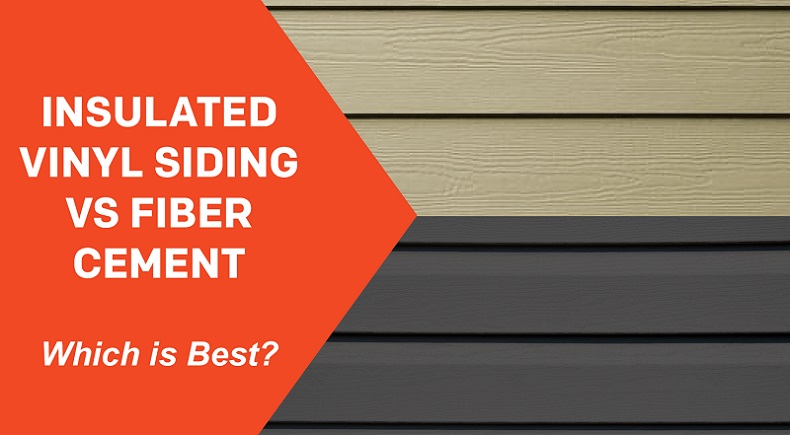
Vinyl Siding Vs. Fiber-Cement Board Siding – Which is Best?
There are plenty of ways to enhance the appeal and practicality of a house. House siding is an excellent investment that will maintain the visual appeal of the property for many years. In addition to enhancing aesthetics, siding offers protection to the exterior walls from sunlight, rain and other elements. Sidings are available in different materials such as brick, wood, stone, metal, and stucco. It can be confusing for you to choose the right one for your home. In this article, we will compare the two types of siding – vinyl siding and fiber-cement board siding.
Blog was also contributed to by Tim O’Sullivan from O’Sullivan Installs
Appearance
Both vinyl siding and the fiber-cement board offers plenty of options for coloring your exterior walls. Vinyl siding is factory made, and they come in over more than 300 colors. On the other hand, fiber-cement boarding can be painted with any color you wish. Moreover, you can repaint the painted fiber-cement boarding siding with a new color in the future.
Vinyl siding can be painted; however, you cannot repaint them in the future. So, you have to live with the same color till you replace the old vinyl siding with the new one.
Fiber-cement boarding siding is thicker than vinyl siding, and this makes the former advantageous in terms of appearance. Higher thickness allows the surface of the fiber-cement boarding to be embossed with deep patterns like of real wood. Though vinyl siding can be manufactured to give a wood-like look, they do not look so realistic due to the lack of thickness and texture. Moreover, fiber-cement boarding is available in brick and stone textures. Vinyl siding is not available in such textures.
Durability And Damage Resistance
Both fiber-cement board siding and vinyl siding are known for its durability characteristic. Vinyl siding comes with a warranty period of 25-30 year, while fiber-cement board comes with a warranty of 30-35 years. You should know that both sidings are vulnerable to insects and woodpeckers.
These reasons make both materials great choice for house siding, though they are not indestructible. Vinyl siding gets damaged when it is punctured or gashed, while the fiber-cement board siding suffers crack due to hard impact.
Both the type of sidings suffers damage due to flame and extreme temperature. Vinyl siding gets warped when it is exposed to excess heat. However, it burns slowly because it is treated with a flame-resistant coating. On the other hand, fiber-cement board siding has a fire rating of Class 1A, means it will not catch fire. This is why people, who live in areas that are prone to forest fire, use fiber-cement board siding.
Vinyl siding is water-resistant but not waterproof. If they are not appropriately installed, moisture can get beneath the surface and can become a breeding place for mold and mildew. Similarly, fiber-cement board siding is more prone to moisture damage, only when they are not appropriately maintained.
Maintenance
Vinyl siding is easier to maintain as you can simply clean with soap water solution and by gently scrubbing. Fiber-cement boarding requires relatively more maintenance.
By considering the above advantages and disadvantages, you should be able to determine, which one will work great for your house.